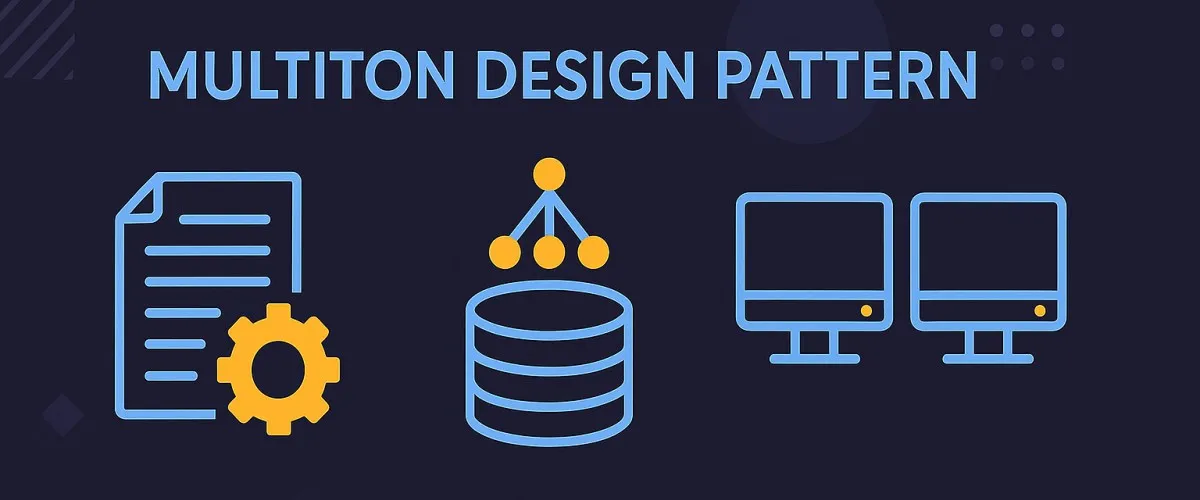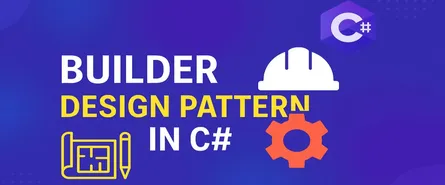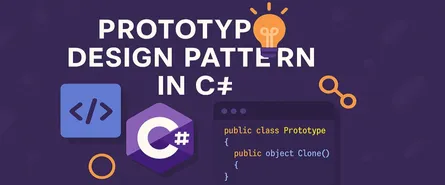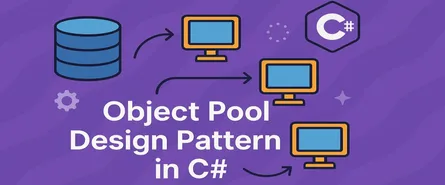
Multiton Design Pattern in C#: Unlocking the Power of Controlled Instances!
- Sudhir mangla
- Design Patterns
- 27 Mar, 2025
Hey there! Ever felt like the Singleton pattern is awesome, but wished you could have a few more instances—just not unlimited? Like having a limited edition collectible—special enough that it’s rare, but common enough you can snag a few. Welcome to the Multiton Design Pattern! It’s Singleton’s cool cousin who isn’t afraid to invite friends over.
But wait—why limit your instances? Isn’t more always better? Not necessarily! Think of a database connection pool—too few instances and your app’s performance tanks, too many, and you risk resource exhaustion. Balance is key, and that’s exactly where the Multiton shines.
Let’s jump right in!
What is the Multiton Design Pattern?
Imagine you’re at an ice cream parlor. Singleton says, “You can only have one scoop.” Multiton, however, hands you a menu and says, “Choose any number of scoops—but no duplicates!” In technical terms, the Multiton is a creational design pattern that ensures a class has only a limited number of instances, uniquely identified by keys. Whenever you ask for an instance with a certain key, the Multiton will give you that particular instance—if it doesn’t exist yet, it’ll create it for you.
It’s the perfect compromise between Singleton (single instance) and Factory patterns (unlimited instances). Pretty neat, huh?
Principles of the Multiton Pattern
The Multiton pattern operates on these key principles:
-
Controlled instance creation:
- Instances are created only when explicitly requested.
- Each instance corresponds to a unique key.
-
Instance management:
- Maintains a collection (usually a dictionary or map) of instances indexed by keys.
- Always provides the same instance for a given key.
-
Global accessibility:
- Instances can be accessed globally without creating a new instance every time.
When to Use the Multiton Pattern?
You know you’re ready to call in the Multiton when:
- You need controlled instantiation: Too many instances can lead to resource wastage or inconsistency.
- Instances must be unique by a specific parameter: If the objects you’re managing must be identified uniquely (like database connections, configuration objects, or loggers), the Multiton helps manage them efficiently.
- You have shared resources: Such as printer pools, thread pools, or limited external connections. Multiton ensures they’re efficiently managed.
But hold on! Don’t just throw Multiton everywhere—if your class instances don’t need controlled uniqueness, a simple Factory or Singleton might do just fine.
Key Components of the Multiton Pattern
There are essentially three players in the Multiton game:
-
Multiton Class:
- Manages instance creation.
- Holds a static dictionary mapping keys to instances.
-
Key (Identifier):
- Uniquely identifies instances.
- Can be an enum, string, integer, or any type that makes sense in your scenario.
-
Client:
- Requests instances by providing keys.
Implementation in C# (Deep Dive!)
Let’s dive into a rich and detailed example. We’ll create a practical C# Multiton implementation for managing database connections.
Scenario: Suppose your app connects to multiple databases—each represented by a unique database key. You want only one instance per unique database key.
Here’s how you build it, step by step!
Step 1: Creating the Database Type Enum
public enum DatabaseType
{
Main,
Logging,
Analytics,
Reporting
}Step 2: Creating the Multiton Class
We’ll use a private constructor and a static dictionary to store instances.
using System;
using System.Collections.Generic;
public class DatabaseConnection
{
private static readonly Dictionary<DatabaseType, DatabaseConnection> _instances =
new Dictionary<DatabaseType, DatabaseConnection>();
private readonly string _connectionString;
// Private constructor to prevent external instantiation.
private DatabaseConnection(DatabaseType dbType)
{
Console.WriteLine($"Creating new connection for {dbType} database...");
// Simulate getting connection strings from config
_connectionString = GetConnectionString(dbType);
}
// Method to retrieve connection string based on database type
private string GetConnectionString(DatabaseType dbType)
{
switch (dbType)
{
case DatabaseType.Main:
return "Server=main;Database=core;Trusted_Connection=True;";
case DatabaseType.Logging:
return "Server=log;Database=logging;Trusted_Connection=True;";
case DatabaseType.Analytics:
return "Server=analytics;Database=analysis;Trusted_Connection=True;";
case DatabaseType.Reporting:
return "Server=report;Database=reporting;Trusted_Connection=True;";
default:
throw new ArgumentException("Unsupported Database Type");
}
}
// Multiton Instance Getter
public static DatabaseConnection GetInstance(DatabaseType dbType)
{
if (!_instances.ContainsKey(dbType))
{
// Thread-safe implementation could use double-check locking
_instances[dbType] = new DatabaseConnection(dbType);
}
else
{
Console.WriteLine($"Returning existing connection for {dbType} database.");
}
return _instances[dbType];
}
// Simulate query execution
public void ExecuteQuery(string query)
{
Console.WriteLine($"Executing '{query}' on database with connection string: {_connectionString}");
}
}Step 3: Using the Multiton Class
Here’s how your client code would look:
class Program
{
static void Main()
{
var mainDb = DatabaseConnection.GetInstance(DatabaseType.Main);
mainDb.ExecuteQuery("SELECT * FROM Users");
var logDb = DatabaseConnection.GetInstance(DatabaseType.Logging);
logDb.ExecuteQuery("INSERT INTO Logs VALUES ('Error', 'NullReferenceException')");
// Requesting the same instance again
var mainDbAgain = DatabaseConnection.GetInstance(DatabaseType.Main);
mainDbAgain.ExecuteQuery("SELECT * FROM Products");
// Verify the instances are the same
Console.WriteLine(ReferenceEquals(mainDb, mainDbAgain)); // Output: True
}
}Output:
Creating new connection for Main database...
Executing 'SELECT * FROM Users' on database with connection string: Server=main;Database=core;Trusted_Connection=True;
Creating new connection for Logging database...
Executing 'INSERT INTO Logs VALUES ('Error', 'NullReferenceException')' on database with connection string: Server=log;Database=logging;Trusted_Connection=True;
Returning existing connection for Main database.
Executing 'SELECT * FROM Products' on database with connection string: Server=main;Database=core;Trusted_Connection=True;
TrueAnalyzing our Multiton Implementation
- Dictionary: We leveraged
Dictionary<DatabaseType, DatabaseConnection>to track instances by keys. - Private Constructor: Ensures no external instantiation.
- Static Method:
GetInstance()controls the logic of instance creation.
Consider Thread-Safety
If you’re building a multi-threaded app, you should definitely consider thread safety. Here’s how you’d implement double-check locking in our Multiton:
private static readonly object _lock = new object();
public static DatabaseConnection GetInstance(DatabaseType dbType)
{
if (!_instances.ContainsKey(dbType))
{
lock (_lock)
{
if (!_instances.ContainsKey(dbType))
{
_instances[dbType] = new DatabaseConnection(dbType);
}
}
}
return _instances[dbType];
}Different Ways to Implement the Multiton Pattern in C#
Alright! We’ve covered a basic implementation—but you’re probably asking, “Are there other cool ways to implement a Multiton in C#?” You bet! Let’s spice things up with some different approaches.
Approach #1: Lazy Initialization (Thread-safe)
Ever procrastinated homework until the last minute? That’s lazy initialization—waiting until absolutely necessary before doing something. It’s super efficient and thread-safe.
Here’s how it looks:
using System;
using System.Collections.Concurrent;
public enum ServiceType
{
EmailService,
PaymentService,
NotificationService
}
public class Service
{
private static readonly ConcurrentDictionary<ServiceType, Lazy<Service>> _instances =
new ConcurrentDictionary<ServiceType, Lazy<Service>>();
private readonly string _serviceEndpoint;
private Service(ServiceType type)
{
Console.WriteLine($"Initializing service: {type}");
_serviceEndpoint = $"https://api.example.com/{type}";
}
public static Service GetInstance(ServiceType type)
{
return _instances.GetOrAdd(type, key => new Lazy<Service>(() => new Service(key))).Value;
}
public void CallService(string request)
{
Console.WriteLine($"Calling {_serviceEndpoint} with request: {request}");
}
}Why Lazy?
- Instances are created only when first accessed.
- Built-in thread safety with
ConcurrentDictionaryandLazy<T>.
Approach #2: Generic Multiton Class
Want a reusable template? Let’s go generic!
public class Multiton<TKey, TValue> where TValue : class
{
private readonly ConcurrentDictionary<TKey, TValue> _instances = new ConcurrentDictionary<TKey, TValue>();
private readonly Func<TKey, TValue> _instanceFactory;
public Multiton(Func<TKey, TValue> factory)
{
_instanceFactory = factory;
}
public TValue GetInstance(TKey key)
{
return _instances.GetOrAdd(key, _instanceFactory);
}
}
// Usage:
class Logger
{
public string LogLevel { get; }
public Logger(string level)
{
LogLevel = level;
Console.WriteLine($"Logger created for level: {level}");
}
public void Log(string message)
{
Console.WriteLine($"{LogLevel}: {message}");
}
}
// Client:
var loggerMultiton = new Multiton<string, Logger>(level => new Logger(level));
var errorLogger = loggerMultiton.GetInstance("ERROR");
errorLogger.Log("Something bad happened!");
var infoLogger = loggerMultiton.GetInstance("INFO");
infoLogger.Log("Everything is OK!");This generic approach makes Multiton reusable, flexible, and clean!
Use Cases for the Multiton Pattern
Now, let’s talk real-world. Where exactly does a Multiton make your codebase shine?
1. Database Connections
- Limited instances to avoid connection exhaustion.
- Example: separate connections for analytics, logs, and main databases.
2. Logging Frameworks
- Different loggers for modules or log levels, ensuring separation but controlled reuse.
3. Thread or Object Pools
- Resource-intensive objects like threads, network sockets, or file handlers.
4. Configuration Management
- Managing different configuration instances per user or environment.
5. Printer Pools
- In an enterprise setting, limit instances to available printers.
Advantages of the Multiton Pattern
Here’s why you’ll love Multiton:
- ✅ Resource Control: Prevents runaway instance creation.
- ✅ Consistency: Guarantees same instance for a specific key.
- ✅ Efficient Memory Management: Instances are reused instead of repeatedly created and destroyed.
- ✅ Global Access: Easily accessible instances throughout your application.
- ✅ Flexibility: More adaptable than Singleton; multiple uniquely identified instances.
Disadvantages of the Multiton Pattern
Hold on, nothing’s perfect! Here’s the flip side of Multiton:
- ❌ Complexity: Can introduce unnecessary complexity if overused.
- ❌ Global State Risks: Like Singleton, can lead to tight coupling or hidden dependencies.
- ❌ Testing Challenges: Makes unit testing trickier due to static state.
- ❌ Potential Memory Leaks: If instances are never disposed of, memory usage might grow.
- ❌ Thread Safety Concerns: Must be carefully designed to be thread-safe.
Conclusion: Wrapping It Up!
Congratulations—you’ve officially unlocked the Multiton’s magic powers! 🎩✨
The Multiton pattern is like having a carefully controlled buffet—you get enough variety without going overboard. It balances flexibility and control, letting you create just the right amount of instances identified by unique keys. When implemented thoughtfully (like with lazy initialization or a generic approach), it becomes a powerful weapon in your design pattern arsenal.
But remember: great power comes with great responsibility. Overusing Multiton can quickly turn your elegant solution into spaghetti code with hidden dependencies. Always weigh the pros and cons carefully.
Keep it simple, use patterns wisely, and you’ll write cleaner, maintainable, and efficient C# applications!





